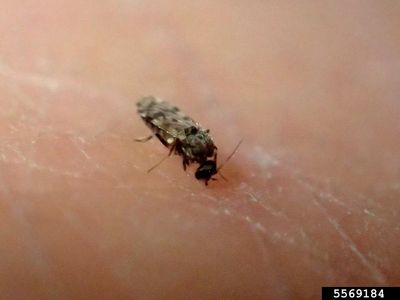Biting Midge Info
No-see-ums are so small that they can pass through the average door screen. These itty-bitty flies are found almost everywhere. The tiny terrors inflict a shockingly painful bite, especially for their size. They go by various names. In the northeast they are called “punkies,” in the southeast “50’s,” referring to their habit of showing up in the evening, and in the southwest they are called “pinyon gnats.” Up in Canada they appear as “moose gnats.” No matter what you call them, no-see-ums are nasty and annoying. There are over 4,000 species of biting midge in 78 genera. They do bite, but don’t transmit any known diseases to humans, however, a few species can be vectors for important animal diseases. The gnats are present in the morning, early evening, and when the day is cloudy. Adult gnats are gray and so small they would fit on the end of a well sharpened pencil. Females can lay up to 400 eggs in a batch, which hatch in 10 days. There are four instars. Larvae are white and develop into brownish pupae. Both males and females feed on nectar, but it is the female which must take blood in order for her eggs to develop.
How to Stop No-See-Um Flies
Biting midges appear after the first spring rains and seem to breed in seepage areas and canyon washes, although different species prefer different locations. That makes widespread extermination impossible. There are a few steps you can take to minimize contact with the insects, however. The first thing you can do is replace your door and porch screening. These pests can get through 16 mesh, so use a smaller grade to prevent their entry. Similarly, campers in areas plagued by the insects should use a “biting midge screen.” Using DEET on clothes and skin can have some repellent effect. Limiting outdoor activities to the times the insects are least present will help prevent bites too.
Controlling No-See-Um Pests
Since you can’t really get rid of biting midges, avoiding contact with them is the obvious answer. However, in some areas they carry the disease bluetongue virus to cattle, which is economically damaging. In these ranges, community dikes and draining marshlands can help reduce populations. Traps are also set, which emit Co2, to attract the insects which are then killed. Aerial spraying of insecticides has been shown not to work. Some success was achieved by stocking smaller bodies of water with carp, catfish, and goldfish. These hungry predators will feed on the bottom of the water, where many types of no-see-um larvae live.
